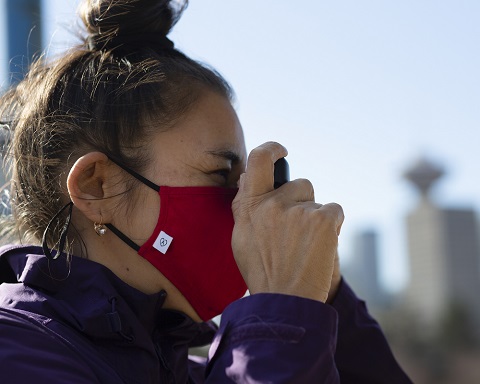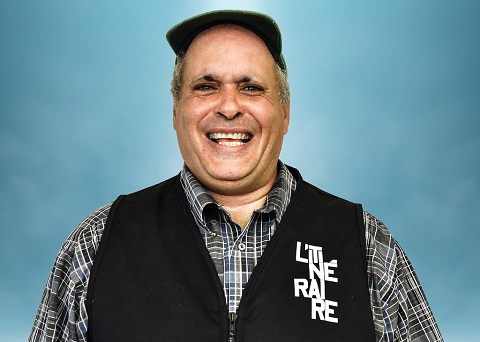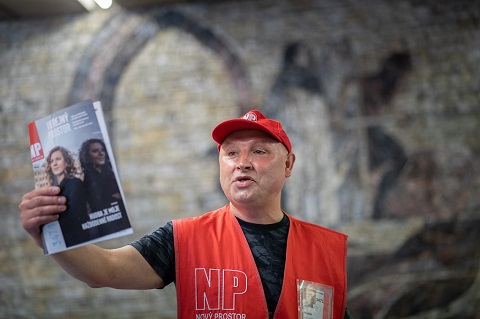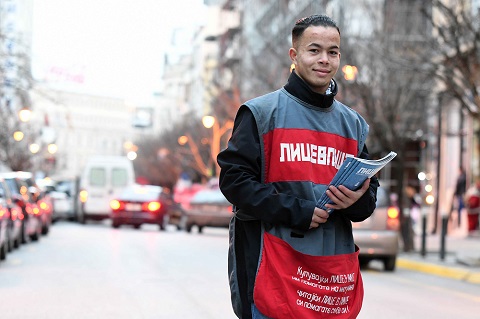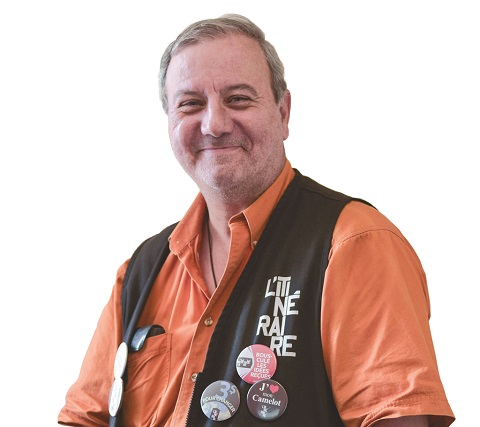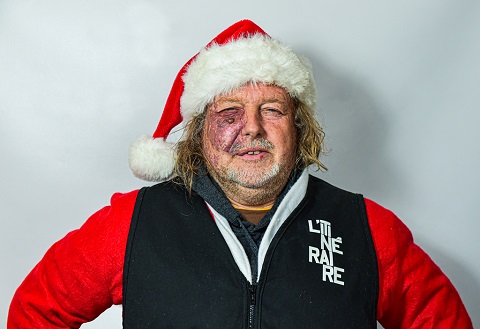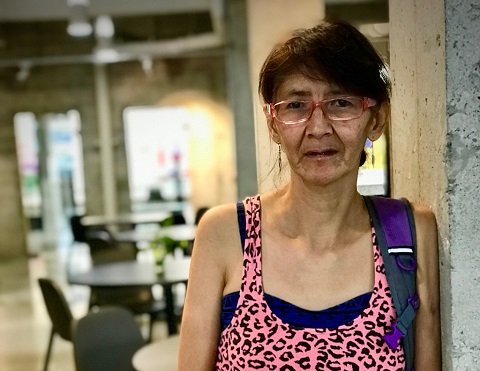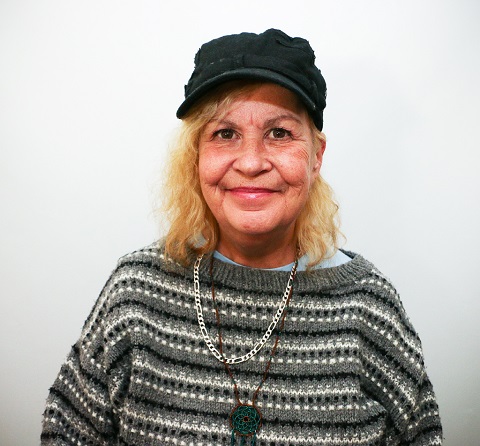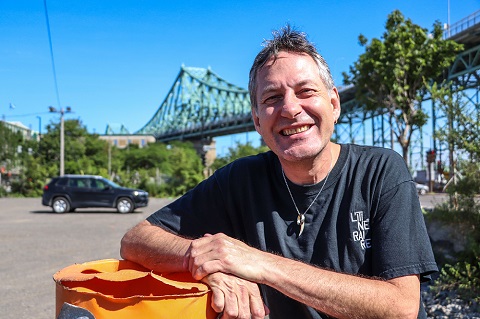By Simon Cheung, Megaphone
Last night at the 2019 INSP Awards, this piece won Best News Feature. Now, you can read it in full.
Eventually, JP sat down on a chair, anaemic and lopsided.
She was dying—had been for a while now.
She was gripped by intense pain, but wouldn’t allow the nearby palliative team to touch her. JP’s neglected breast cancer had manifested into a festering tumour, dripping fetid discharge.
Palliative specialists seek to improve a patient’s quality of life, right to the end. Their objective is simple, but for JP—and others in poverty—there were significant obstacles.
She’d appeared at a Vancouver shelter after at least two years of homelessness, struggling with multiple substance addictions, psychosis and bipolar disorder. A Surrey cancer agency had turned her away because it lacked the capacity to handle myriad mental health issues.
Dr. Susan Burgess, an outreach physician with Vancouver Coastal Health’s Home Hospice Palliative Care program, brought JP to the Sue Bujold Floor of Bridge Housing for Women, following contact from a Vancouver General Hospital (VGH) social worker. Despite being ravaged by infection, JP managed to repeatedly escape from VGH and other hospitals.
“She kept leaving against medical advice, obviously because they weren’t dealing with her addiction at all—and she’d turn up at a shelter, or she’d turn up homeless in the corner,” recalls Burgess, who has 25 years of experience bringing palliative care to structurally vulnerable individuals. “When she turned back up at the housing we had for her, we decided that was it: We’re not sending her back to hospital, because it wasn’t going anywhere.”
So, there she sat, societally isolated, but with a dedicated few by her side, honouring her vulnerabilities. Finally.
“We just had to sit with her and this foul, foul, rotting tumour that she was living with, and give her little syringes through her mouth of morphine pain control until she relaxed enough to fall onto a mattress on the floor,” Burgess remembers. “Then we could do our usual palliative treatment to get her comfortable and help her at end of life.”
“She died comfortably—but not in hospital, not in an acute ward, not in emerg… it was a lovely room. With sunshine.”
‘Most people don’t even get identified as people who are dying’
JP’s caregivers were lucky to find her a room to pass away in, Burgess notes. She even posits the existence of a “kind spirit” that watches over the Downtown Eastside (DTES). But Burgess and other palliative care specialists recognize that individuals like JP require an integrated health care system capable of not only identifying and treating a multitude of issues, but also affording palliative teams the flexibility to meet patients wherever they’re comfortable, and enough time to earn their trust.
Kelli Stajduhar, a professor in the School of Nursing and the Institute on Aging and Lifelong Health at the University of Victoria, describes how vulnerable populations consistently disappear between Canadian health care’s longstanding silos.
“Most people don’t even get identified as people who are dying. There’s no orientation around palliative care for most people until the very end of their life, and then they’re either in acute care or they’re dying in some really crappy situation: in a park, in a terrible hotel, not having a lot of support, and in pain,” Stajduhar says. “The people who are lucky are the ones who came in contact with some service provider who had some orientation toward palliative approaches to care and actually knew that there would be resources that could help people. That’s the general picture at the moment across the country.”
In Toronto, Dr. Naheed Dosani has been prolific in creating such supports. In 2014, he founded the PEACH (Palliative Education and Care for the Homeless) mobile health care program with Inner City Health Associates (ICHA), and continues to serve as its palliative care lead. He is also the medical director at Journey Home Hospice, which opened April 2018 with four beds (set to expand to 10). Dosani hopes to grow the hospice into a “centre for excellence,” providing clinical care, education and research on palliative care for structurally vulnerable people.
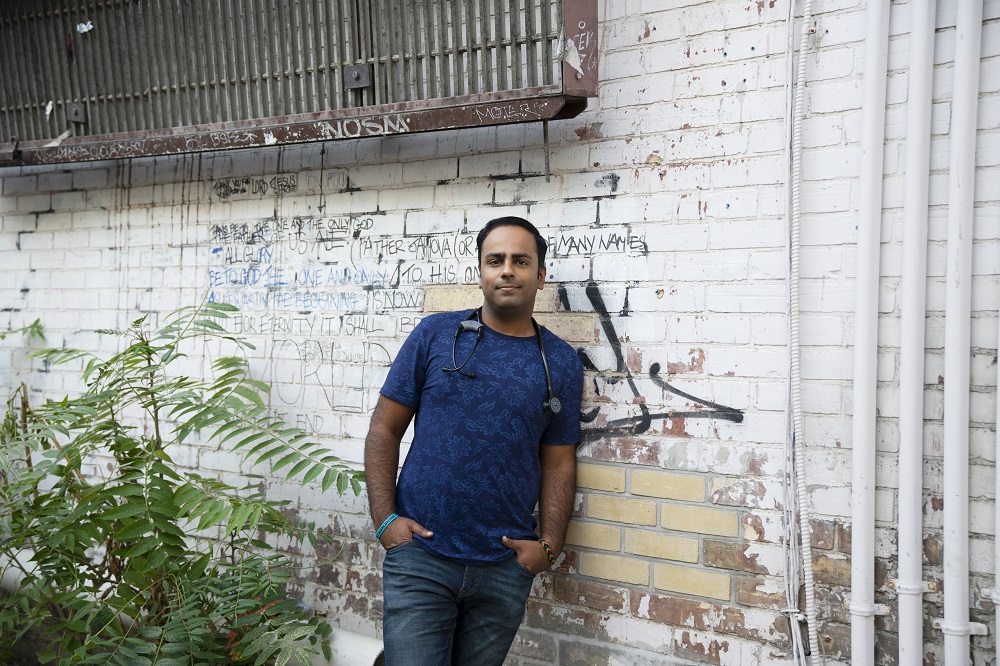
Despite receiving accolades for these projects, Dosani assesses the overall situation as far from ideal.
“It’s unfortunate that we live in a society where specialty teams have to exist to support the homeless and vulnerably housed at the end of life,” he says. “If we truly were building the vision of medicare in an equitable society, everybody gets access to an equitable approach to palliative care—whether they’re in prison, whether they’re in a shelter, whether they have intellectual disabilities. What you’re seeing popping up in terms of these programs and systems is a patchwork-style approach to a levelling of the playing field.”
Health care: Stuck in the 1950s
Apart from Vancouver, Toronto and a handful of initiatives in Calgary, Ottawa and Victoria, Stajduhar says Canadian palliative projects are scant, and virtually nonexistent in rural areas.
A significant factor behind health care inequity is funding, Stajduhar explains. The Canadian system is based on a 1950s model that prioritized money for hospitals, doctors and drugs when deaths due to infectious diseases and workplace accidents were far more common than they are today. There is now a resultant biomedical emphasis in medicine, and a de-emphasizing of the social aspects of health care that are predominant for individuals living in poverty.
“The organization and delivery of health care is decades behind,” says Stajduhar, a palliative nurse for 30 years. “Everybody knows it; everybody sees it; nobody has the courage to do anything about it.”
Unaddressed, these poverty-related issues—food scarcity, the lack of transportation or communication options—throttle access to health services, Dosani points out.
“One of the saddest parts about being downstream and receiving clients who are the product of the accumulative effects of the deficiencies of the social determinants of health, is that you start to see what gaps in social policy do to people,” Dosani says. “They are a constant reminder of why guaranteed basic income is important, why housing first is important, why national pharmacare is important.”
Stajduhar released Too Little, Too Late: How we fail vulnerable Canadians as they die and what to do about it, a study of 25 homeless and barely housed individuals. Thirteen of the participants passed away during the study’s two-year timeframe.
Too Little, Too Late makes a dozen recommendations, including calls for greater focus on the social determinants of health, strengthened communications between health care and inner-city services, and increasing community capacity to provide palliative support, if only at a basic level.
“There’s no reason that social care workers that are out there, who have relationships with folks, wouldn’t be able to do this,” says Stajduhar, the study’s principal investigator.
“And they want to, because they have relationships with these people—they care about them, and they’re often the best people to provide that continuum of care.
“The form of family is different in this community,” Stajdhuar notes. “The outreach workers and the service providers who work in the community often are de facto family members… but are not always recognized as family. It’s a complex set of circumstances and any kind of standardized approaches to care aren’t really going to work for individual people.”
“We just had to sit with her and this foul, foul, rotting tumour that she was living with, and give her little syringes through her mouth of morphine pain control until she relaxed enough to fall onto a mattress on the floor. Then we could do our usual palliative treatment to get her comfortable and help her at end of life.”
A member of the study’s research team, Dosani advises that uniting disparate community-based parties can start simply with dialogue. Dosani says Journey Home’s genesis—a collaboration between ICHA, Saint Elizabeth Health Care and Hospice Toronto—exemplifies the necessity of toppling health care silos in order to build shared-care models.
“Inner-city health providers—I’m talking about mental health street nurses, outreach psychiatry teams, the Insite project—a lot of them are practising in a way that supports quality of life,” he observes, “and so are the palliative care providers. Actually, the goals are quite common.
“What you need is a team that’s in the community and willing to see anything on a spectrum that’s diverse and deal with it, and also have a space and beds to be able to be flexible, that are not bounded by particular funding envelopes. That’s hard to come by in a very siloed health care system. This is a truly transverse, intersectional issue.”
Too Little, Too Late declares that “massive cash injections and program overhauls are not needed” for a shift toward a community-based system.
Rather, Stajduhar predicts that reallocating existing money and resources toward a shared-care approach would result in overall cost savings.
In its 2014 annual report, the Office of the Auditor General of Ontario found that the approximate per-day cost of providing palliative care in the last month of a patient’s life was $1,100 in an acute-care hospital bed and $630 to $770 in a hospital palliative- care unit, versus $460 in a hospice bed and under $100 for at-home care.
The report references a 2010 study called Ideas and Opportunities for Bending the Health Care Cost Curve, which estimated $9 million in savings Ontario-wide for every 10 per cent of patients who are shifted from receiving palliative care in an acute- care hospital to receiving care at home.
“In addition, when properly resourced, home-based palliative-care services result in higher patient and caregiver satisfaction with end-of-life care,” the auditor general adds.

While the auditor general report doesn’t address homeless individuals specifically, it notes that in order to help patients who could benefit from palliative care, more people need to learn what palliative care is, what services exist in the community, and how to access those services. Otherwise, it says, there is a risk that patients will suffer unnecessarily by not receiving timely care, or the health system will incur unnecessary costs when patients end up in a hospital emergency department.
“We don’t need any new resources,” Stajduhar says. “We need somebody who’s going to be able to navigate those systems for people—help the systems work better together—so that that person dies in the location of their choice, and has their symptoms managed and their needs met. And there’s absolutely no reason why that can’t happen, in my estimation. It’s not rocket science.”
Meeting vulnerable people
With a more integrated system, perhaps then there would be fewer cases such as Ted, a 74-year-old homeless regular at a Vancouver Tim Hortons who lost consciousness at his usual table in the early morning hours of 31 May. When staff called for help, it was to 911. Emergency health services attended to Ted’s last moments. The elderly man had been battling cancer.
Ted’s story was picked up by international media, exposing Canada’s health service deficiencies worldwide.
Dosani says the case is a lesson in the importance of meeting vulnerable people where they are.
“Part of the reason this [vulnerable] population doesn’t get access to palliative care is because they present in non- traditional ways,” he says. “What was it about those amazing people at Tim Hortons that drew this individual there, time and time again, all the way up until end of life? What was it about that ‘home’ that the person was journeying to?”
PEACH and Journey Home are attempts to deconstruct the end-of-life experience and customize it to the individual, and Dosani advocates for health care funding calibrated to the patient, not to medical specializations. He references well-known health care advice: “listen to the person you’re serving. They are telling you their diagnosis. They are telling you their story. They are telling you about their suffering, and they are telling you what they need and where they need to be.”
Burgess concurs, stressing the importance of housing staff and tenant support workers getting to know residents and having conversations about end of life.
“Because this is now their home,” she says. “If you got sick, and you couldn’t talk, what would your wishes be? If you die, who do you want to have your stuff?
“All of those things, simple things, that all of us should be doing, can be embedded in our relationships around housing, so that people have a better sense of people’s wishes.”
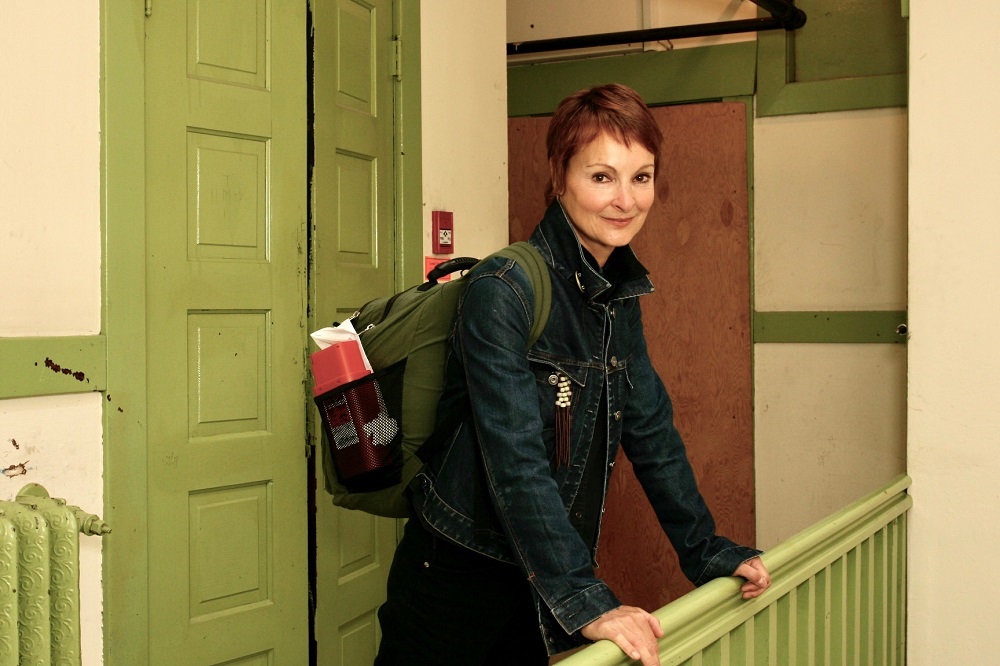
Burgess serves as a physician at May’s Place and Cottage Hospice, both low- barrier hospices run by The Bloom Group, an anti-poverty and homelessness non- profit based in the DTES. May’s Place, which opened in the DTES in 1991, was Canada’s first free-standing hospice.
“What I love about it is that it was for the poor,” Burgess says. “Its mandate was for this population, with flexibility around the needs of this population too.”
Individuals with serious mental illnesses, substance use issues or incarceration histories, Burgess says, are often not easily housed. Enclosed spaces, for example, can trigger those who have been repeatedly imprisoned and constrained. Like Stajduhar and Dosani, Burgess would like to see greater variety in low-barrier housing available—optimized options for individuals with violent psychosis, for instance, or institutional trauma, or suppurating wounds.
“I would like to see [May’s Place] expanded,” she adds. “I would like to see it beautified. I would like it to have a garden… a real garden.”
In a care philosophy focused on quality of life, seemingly small aesthetic improvements can make a meaningful difference to the dying poor. Burgess recalls a young man with an overwhelming infection that would inevitably claim his life. He refused to go to the hospital—he’d die there, he said.
Burgess eventually convinced him to try May’s Place. There, he had a shower, then relaxed in a robe. That night he died, handsome and clean.
Burgess still remembers his reaction when he first entered the modestly decorated hospice:
“Oh God… this is like heaven.”
INSP members can download this feature from the INSP News Service here.





